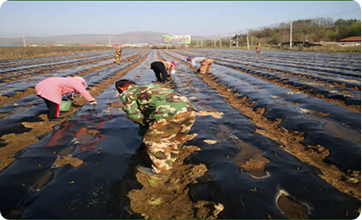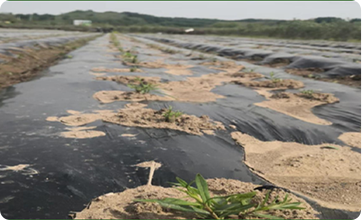Industry Introduction
Joining hands to help achieve the goal of “thousands of cities and stores”
Creating an excellent business landscape
High yield and high returns, a win-win situation for ecology and economy
haoliu sericulture
About sericulture
Artemisia annua sericulture is an ecological and high-yield emerging industry, which is a good way to alleviate and solve the contradiction between silkworms and forests. It is also a prosperous project with both economic and ecological benefits. The protein and fat content of silkworm pupae cultured in Artemisia annua are slightly higher than those cultured in oak trees, and they are tender with thin skin and a high rate of yellow pupae.
Dandong City is a famous hometown of oak silkworms in the world. The reason why it is called the hometown of oak silkworms is not only because it has unique natural resources and a long history of sericulture, but also because it has a unique oriental silk culture, which is an important part of Eastern culture. Nowadays, the tussah silk in Dandong can produce 13 categories, more than 300 varieties, and 670 colors of cotton, silk, silk, and other fabrics. 90% of the products are exported to more than 50 countries and regions including the United States, Italy, and Eastern Europe, making outstanding contributions to the economic development, opening up to the outside world, and expanding export earnings in the Dandong region.
In recent years, due to the development of biotechnology, the comprehensive utilization value of tussah silkworms has also attracted increasing attention. Extracting high-tech products such as tussah extract, interleukin, antimicrobial peptides, interferon, as well as medical and health products from silkworms, pupae, and moths has provided huge market potential and development prospects for traditional tussah production.

What are the steps required for raising silkworms?
Silkworm breeding process

Picking strips
(December to March of the following year)

Cutting strips
(2-3 days before cutting)

Pre cutting treatment
(Soak in clean water for more than 24 hours)

Deep plowing and land preparation
(Rotary tillage depth of 30-40cm)

Covering with plastic film

cutting propagation
(It is advisable to be around April 5th)

April 12th
(Artemisia annua completed through cuttings)

May 7th
(Sprouted Artemisia annua willows)

May 30th
(Plant height 30-50 centimeters)

June 15th
(Plant height 60-80 centimeters)

July 1st
(Plant height 90-110 centimeters)

July 10th
(Plant height 110-130 centimeters)

August 1st
(The little silkworm of the queen ant)

August 6th
(Silkworm babies after sleeping)

August 13th
(Silkworm babies after two sleeps)

August 20th
(The Silkworm Baby After Three Sleeps)

August 28th
(Silkworm Baby After Four Sleeps)

September 4th
(Silkworm babies form cocoons)
The Value Advantages of Raising Silkworms with Artemisia annua and Willow
value advantage
01
Haoliu High nutrition
Haoliu's leaves are relatively tender and have a high protein content. Small silkworms eat Artemisia argyi leaves and grow quickly, taking 23 days to mature, which is one month earlier than that of oak silkworms
02
Silkworm pupae have a good taste
After testing, it has been proven that the protein and fat content of silkworm pupae cultured with Artemisia annua are slightly higher than those cultured with oak trees. Moreover, the pupae have tender skin, thin skin, high yellow pupa rate, and good taste
03
High weaving quality
The silk woven from Artemisia annua cocoons can be regarded as the aristocrat of silk

About Jinyue
The technical team of Liaoning Yuejin Sericulture Technology Service Co., Ltd. is operated and executed by an excellent management core and business team. Having over ten years of experience in promoting and planting agricultural projects, with rich experience in organizational management and field management.
The company has fully mastered the core technologies and management capabilities of Artemisia annua cultivation, variety selection and optimization, and research and promotion of Artemisia annua sericulture technology.








